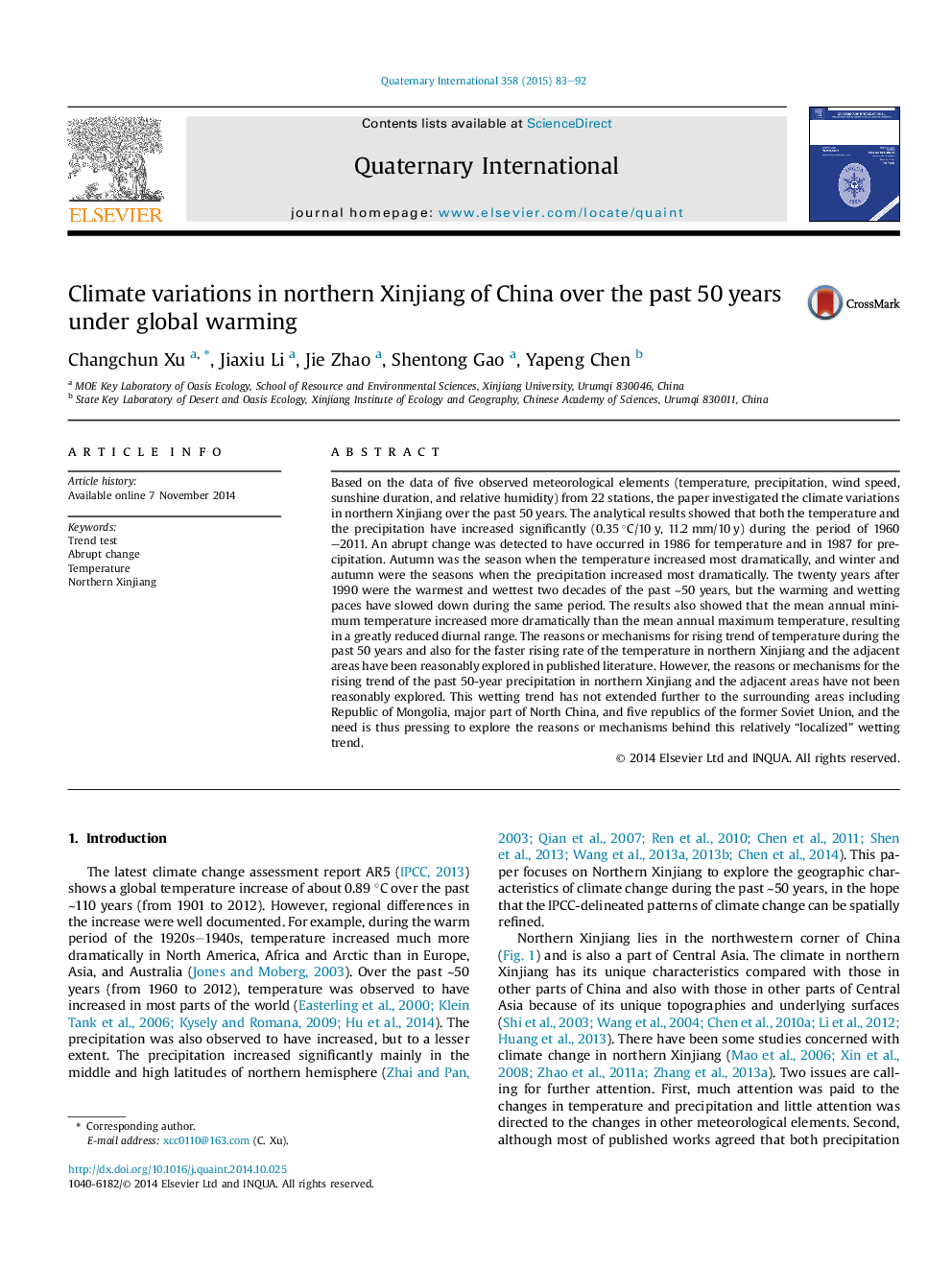| Article ID | Journal | Published Year | Pages | File Type |
|---|---|---|---|---|
| 1041020 | Quaternary International | 2015 | 10 Pages |
Based on the data of five observed meteorological elements (temperature, precipitation, wind speed, sunshine duration, and relative humidity) from 22 stations, the paper investigated the climate variations in northern Xinjiang over the past 50 years. The analytical results showed that both the temperature and the precipitation have increased significantly (0.35 °C/10 y, 11.2 mm/10 y) during the period of 1960–2011. An abrupt change was detected to have occurred in 1986 for temperature and in 1987 for precipitation. Autumn was the season when the temperature increased most dramatically, and winter and autumn were the seasons when the precipitation increased most dramatically. The twenty years after 1990 were the warmest and wettest two decades of the past ∼50 years, but the warming and wetting paces have slowed down during the same period. The results also showed that the mean annual minimum temperature increased more dramatically than the mean annual maximum temperature, resulting in a greatly reduced diurnal range. The reasons or mechanisms for rising trend of temperature during the past 50 years and also for the faster rising rate of the temperature in northern Xinjiang and the adjacent areas have been reasonably explored in published literature. However, the reasons or mechanisms for the rising trend of the past 50-year precipitation in northern Xinjiang and the adjacent areas have not been reasonably explored. This wetting trend has not extended further to the surrounding areas including Republic of Mongolia, major part of North China, and five republics of the former Soviet Union, and the need is thus pressing to explore the reasons or mechanisms behind this relatively “localized” wetting trend.
